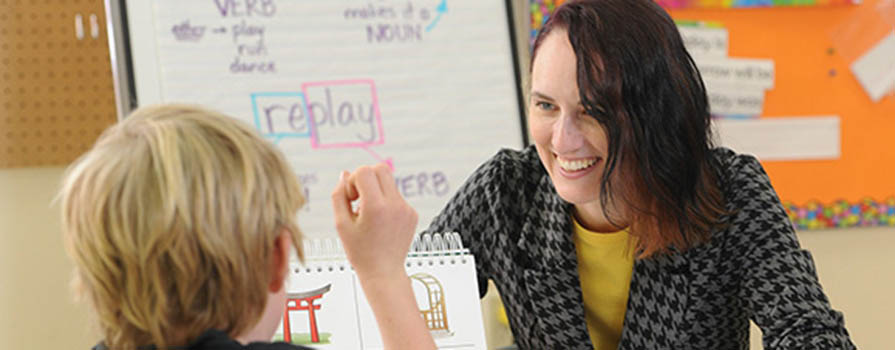The language of learning

If you’re a hearing individual, think back to a time when you were in a room filled with loud conversation and you were trying to understand what someone was saying to you. If the background noise blocked you from understanding, you may have looked at his or her mouth for clues. Perhaps they pointed at something or engaged in charades.
Bonita Squires, PhD(c), Speech-Language Pathology, says this scenario loosely illustrates what it may be like for those who are d/Deaf or hard of hearing. It helps explain the impact that learning has on comprehension when that learning happens later in life. When hearing individuals, who have likely only communicated verbally, can’t hear, they must engage a new and unfamiliar language. In this scenario, that language is lip reading and charades. However, since the language is new to them, they may only catch bits of the person’s message. The full breadth of meaning is lost.
“As a researcher, I am always trying to understand the factors that impact learning and language acquisition,” says Bonita. “Motivation, exposure to print, how much your parents read to you, what other languages you might’ve been exposed to, how well your hearing aids are working that day—these are all factors.”
As a Research Coordinator and Sessional Lecturer at Dalhousie University, Bonita is working to understand how children’s reading levels may influence, or be influenced by language acquisition. Part of the journey that has brought Bonita to this role was a language acquisition of her own: completing the American Sign Language English Interpretation Diploma program.
“I want to know if the relationship between sound comprehension (phonology) and reading, and between the meaningful parts of words (morphology) and reading, is the same or different for d/Deaf or hard of hearing children than that of hearing kids. If it’s different, then maybe we should be teaching them to read differently.”
A lot of what I'm doing now, I simply wouldn't have the background knowledge to do without having attended NSCC. It is a huge part of what it means to me to be successful in my PhD.
From trumpet to linguistics
Bonita’s route to linguistics wasn’t direct; however, she says that each stop along the way was a crucial part of her learning journey. "I think of education more broadly than taking a formal program,” says Bonita, a B.C. native who has spent time with Katimavik as well as training as a classical trumpeter. “I had a bit of a path of figuring out where I was going.”
After completing a Bachelor of Arts (Linguistics) at Concordia University, Bonita says she looked across Canada for a program that would allow her to delve deeper into the process of interpretation. That was when she found NSCC. “I remember visiting the campus, talking to people and getting really excited about the program.”
Bonita explains that the contacts she made during and following her diploma program are integral to her success today. “They allowed me to become a collaborator in the d/Deaf and hard of hearing community—someone who sees the community as friends and peers who are impacted by my research—not as separate from them.”
After graduating, Bonita worked for four years as a sign language interpreter. “I was in classrooms with learners and in pubs with community members. I witnessed, first hand, what the first day of school is like for a child with a cochlear implant. I was able to see and realize how experiences differed due to access to language.”
She adds, “A lot of what I'm doing now, I simply wouldn't have the background or knowledge to do without having attended NSCC. It is a huge part of what it means to me to be successful in my PhD."
Fast Fact
A common misconception is that sign language is a universal language. Like spoken languages, there are hundreds of signed languages in use around the world. Signed language is also impacted by local dialects, posture, hand/finger positioning and facial expressions.

